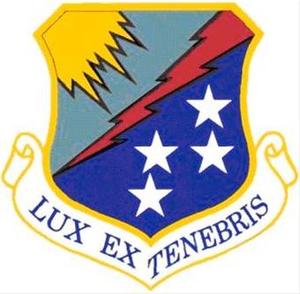U.S. Air Force shifts 30,000 troops to "cyberwar front lines"
The USAF has assigned 30,000 to cyberwarfare specialties; 3,000 will become cyberspace officers; Brigadier David Cotton, director of cyberspace transformation, says about the new specialty: “It’s not just spray paint, it’s a new mindset”

Insignia of the 24th Air Force's 67th Network Warfare Wing // Source: 24af.af.mil
The U.S. Air Force reports that it has assigned no fewer than 30,000 digital troops to “the front lines of cyber warfare.” This is close to a third of the number of U.S. troops deployed in Afghanistan.
The Air Force Times reports that 27,000 enlisted airmen and women are now classified as cyberspace specialists, having previously been rated as communications and electronics people. Some 3,000 officers have been shifted out of other specialties to become elite “cyberspace officers,” potentially eligible to wear the coveted cyber wings recently established by the USAF (the Air Force Specialty Code for officers is now 17D. It had been 33S. For enlisted, the 2E, 3A and 3C AFSCs — communications and electronic maintenance jobs — have been merged into the 3DX category).
Lewis Page writes that only a fraction of these people are actually assigned to the new cyberwar formation, the 24th Air Force, which is now forming up. Most belong, and will continue to belong, to communications sub-units in normal air force formations. Supporters of the USAF adoption of cyberwar insist that a major change is happening. According to the Air Force Times:
Communications officers often saw themselves as others saw them: airmen who made sure the base computer network worked, said [Brigadier David Cotton, director of cyberspace transformation] who began his career a computer programmer.
Cyberspace officers will continue to provide support but they also will be the go-to experts on how a computer or communication network can improve war-fighting capabilities.
Page notes that, in particular, the hundreds of cyber-warriors assigned to 24AF’s 67th Network Warfare Wing will actively seek to exploit and attack other people’s networks, rather than defending and securing their own. The lightning-winged cyberspace officers, rather than being retread communications types, will henceforth come from a lengthy course lasting 115 training days. “It’s not just spray paint, it’s a new mindset,” insists Cotton.
With the U.S. Navy also commissioning its 10th [Cyber] Fleet, the U.S. Army keen to join as well, and a central Cyber Command now forming alongside the NSA (itself a military combat support agency) “it is no exaggeration to say that America will soon have more troops on the ‘front lines of digital warfare’ than it does in Afghanistan,” Page writes.
